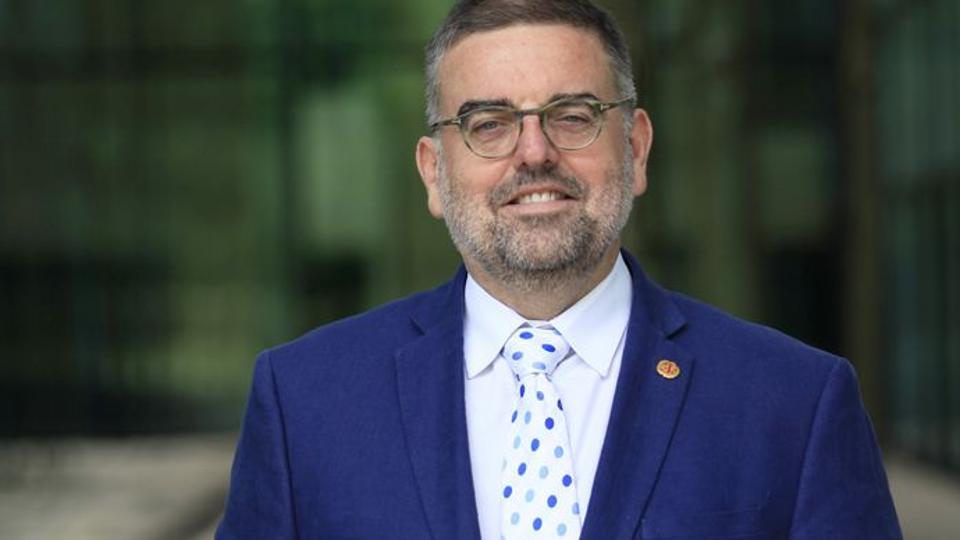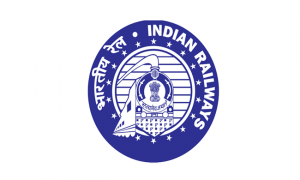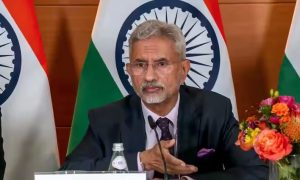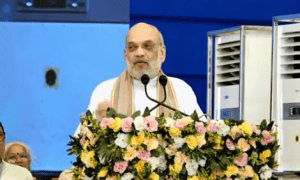The Joint United Nations Programme on HIV/AIDS (UNAIDS) and partners launched the 90–90–90 targets in 2014 with the aim to diagnose 90% of all HIV-positive persons, provide antiretroviral therapy (ART) for 90% of those diagnosed, and achieve viral suppression for 90% of those treated by 2020. Despite considerable scaling up of ART across the world, there were 1.7 million people newly infected with HIV in 2018. There are 2.14 million people living with HIV in India, with new infections rising in Assam, Mizoram, Meghalaya and Uttarakhand, and declining in Nagaland, Manipur, Delhi and Chhattisgarh. Dr Eamonn Murphy, UNAIDS regional director for Asia and the Pacific, tells Sanchita Sharma why countries must retool programmes and focus on prevention, including scaling up pre-exposure prophylaxis (PrEP) and self-testing, to prevent new infection, which is rising among young people.
Do you see the world meeting the 90-90-90 targets by 2020?
The simple answer is no. Some countries are doing extremely well, particularly in eastern and southern Africa. In the Asia Pacific region, we have a mixed but very slowing response. A couple of big countries are holding us back with big epidemics, we also have new epidemics coming out. In the last nine years, we have seen only 9% decline in new infections. If you’d asked me this question last year, then it (the decline) would have been a higher because with growing infections, our progress is going backwards. This is the real challenge.
Which are the countries doing well, and which are not?
Thailand is doing extremely well in terms of its response, with Cambodia, Australia and Vietnam in the mix. But then we see countries like the Philippines with 200% increase in new infections in the last nine years, with a particularly steep increase in the last three or four years. Pakistan has had a 57% increase in the same period.
What led the HIV outbreak in Larkana, when at least 800 people were diagnosed with HIV, 80% of them children, earlier this year?
It was infection control procedures, mainly in GPs and local medical facilities. It wasn’t a crossover from key populations at risk, it wasn’t mother to child. You had in families of five children, two children infected and not parents. There were injection safety issues, including reuse of drips for saline to treat dehydration and diarrhoea in children. It was a result of a lot of things being reused, principally in the private sector and private blood banks, all compounding in one area.
We’ve seen similar situations, but not in that scale, for example in Cambodia in the region, and globally. Pakistan quickly ordered a full investigation and scaled testing to map it, which we must recognise in a political world is a bold step.
How would you rank India on a scale of 10?
At seven, there’s been some slippage. In the Asia Pacific region (48 countries), Thailand is number one. Philippines was up there with Thailand there was complacency and infection is back among the young in super high numbers. And that’s the worry. It can happen elsewhere.
India has done a number of amazing things for the world and for its own population. Generic drugs have had the biggest impact globally to get people into treatment. India’s focus on key populations (that spread infection), social contracting and putting the community first and equal in the response has been significant, but it needs to be rejuvenated because it is slipping. This is partly because of the lack of political will globally, regionally and at the country level, because they need to recognise that AIDS is far from over. And at the rate we’re going, it’s going to start remerging in new geographic areas and new populations.
What are the new tools to stop new infection?
PrEP and self-testing are the two tools that really need to be scaled up. We’ve got to get prevention moving because we have a new generation that’s taking new and higher risks than the older generation that knew more about HIV. PrEP is an area India could seriously put in place, Australia saw 25% reduction (in new infection) after it was rolled out. Working with community at the heart, and I would encourage India to review that approach and make it stronger, like it was in the past.
Should social media used more actively for prevention messaging?
Yes. Programmes in all countries, including India, need to go through a prevention revolution. We need to retool and re-gear the programmes to target young people.
We have knowledge, we have protection, we have the drugs. Why is new infection still so high?
There are issues of complacency. A lack of political energy in the response is one of the critical issues now. In our region (Asia Pacific), we’re seeing new waves (of infection). We are seeing increasing infections in the young population because they are not connected with the old programmes. The people for who they were designed for have matured and we’re not communicating (enough with the young). We have a new generation that’s taking new and higher risks than the older generation that knew more about HIV.
I often ask people what is the main mode of transmission and many don’t know. Then I hold up my phone and say this is the main mode of transmission these days because that’s how people connect, socialise and make arrangements. Dating happens on social media apps and people don’t have to go to a nightclub, a cafe, a bar or a social event and get up the nerve to speak to another person. Now you text or go online, and if the person says yes, it’s agreed and if it’s a no, you move on. The whole personal dynamics have changed, especially among the young.
Studies show there is increased infection among those using social media in all forms – Facebook, Twitter… everything, not just dating apps. In the Philippines, there are “clans” on Twitter, with over one thousand people in a Twitter clan interconnecting. It’s perfect for a disease spread.
When I was a young man, you would see people physically showing signs of HIV. We don’t see that anymore because medicines are so much more effective thanks to science and generics, which makes people complacent.
About 8.1 million people globally do not know they are living with HIV. How can access to testing and ART be scaled up without violating human rights?
We need different models of testing scale up testing in the key populations, who are the predominant drivers of the epidemic. India is no different. People are not coming forward for testing because of discrimination and fear… of loss of employment, of stigma or discrimination by healthcare workers or society. That is not easy to overcome and address.
Self screening is a critical new tool that can help overcome this because it means I can test myself in the safety of my home. I’ve seen a very good programme in Mumbai where you’re at home and you want to get tested, I send you the test kit and we do the testing online or over the phone where I guide and counsel you as you do it. With the oral tests, the good quality approved ones, you can do it by yourself too. If you test positive, you can get a proper test.
We need to make testing much more attractive and that means addressing stigma and discrimination in healthcare settings. It’s not just in government services, but it’s in all services.
What affect do laws that criminalise HIV transmission and homosexuality have on HIV transmission?
India has done some good things with changing laws recently, with a proactive legislation and new HIV policies. Even if the law is not properly implemented, Section 377 (of the Indian Penal Code that makes “carnal intercourse against the order of nature” punishable with imprisonment for life) in India and in a number of countries in Asia-Pacific region that were British colonies, it’s there as a threat and it reinforces the negativity.
If you have HIV, or think you have HIV, you have to expose yourself to questions of how you got it, loss of employment, loss of family protection, loss of social inclusion, so many negatives from dealing with that. So you keep quiet until you’re very sick.
There are companies that test employees for HIV even when it’s not the law to test employees for diseases. You don’t get HIV from riding in taxis but I know one country where the taxi drivers have to be tested very year. Now that law would have been brought in the days of fear and lack of knowledge and often these laws are just in the books, but how do you get such laws off the books? That’s part of the challenge.
India has broken the mould and struck down Section 377. Now change needs to happen in reality. But it is significant that there is no law in the books that says your personal life and behaviours are illegal.
Which countries have regressive laws?
Other countries, like Singapore and Malaysia, also need to look at it (law). Indonesia was looking to criminalise sex outside marriage. That law is not there, why bring it in? It will make people more afraid of going anywhere near health services if they have to admit to an extramarital or sex before marriage. This does not make good public health sense, nor does it help a society move forward because diseases spread if people don’t go to healthcare facilities.
Other risk issues are around HIV transmission and non-disclosure, even the barrier for employment for overseas workers coming in. In this day and age, for a country like Singapore to have that law means missing out on skilled workers.
These are all laws that need to be done away with. The countries that criminalise sexual behaviour or other risk behaviours make it so much harder for themselves to deal with communicable diseases.
We are seeing a decrease in harm-reduction effort across the region and we’re going to see a pickup in numbers (of new infection) again.
Since 2010 global financial crises, donor funding has fallen by $1 billion. Has the global success against HIV, which helped put 23.3 million on treatment, become a roadblock in scaling up the fight?
It’s unfortunate with communicable diseases, when infection comes down, complacency sets in. We’ve seen it with TB, we’ve seen it with malaria, and HIV is now part of that. It was a new kid on the block for a long time and got a lot of attention. Now it’s been there for a longer term.
Some developed countries use the treatment approach (to stop HIV). PrEP is the new revolutionary prevention being rolled out. There’s been a 25% reduction in Australia a year into intervention. Others that have put in a lot of effort have relied on foreign investment for prevention. The domestic increases have all been for treatment, we’re not seeing the investment in prevention, including in India.
We also need to look at the cost efficiencies. Universal health coverage provides an opportunity there. Prime Minister Narendra Modi has made an announcement about bringing TB and HIV together and that’s how it should be because getting programmes addressing similar issues together makes both delivery and investment more efficient and effective. India needs to now figure out how to put that into practice.


























 WhatsApp us
WhatsApp us